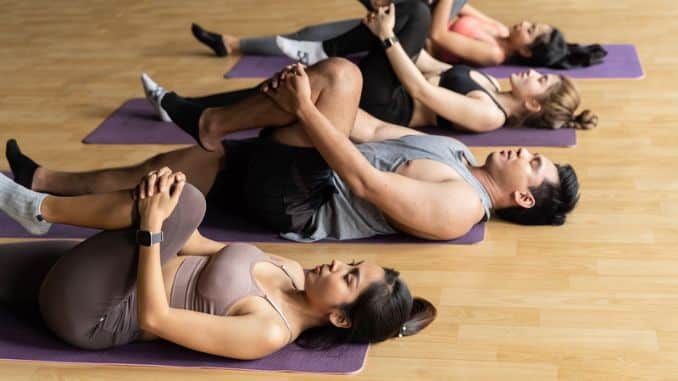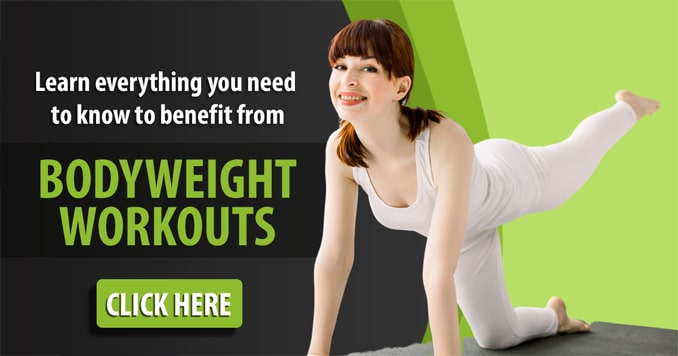The last thing you want to do when you're confined to your home stays active. However, with proper exercise, you can stay healthy even while trapped indoors during quarantine. By staying active, you keep your mind sharp and your muscles toned.
Staying active and maintaining a healthy lifestyle can be difficult when you're stuck indoors. Even the most mundane activities can feel challenging when confined to a small space. This can make staying healthy and active in quarantine even more difficult. Fortunately, there are several ways to stay involved in quarantine. The key is to find enjoyable activities that don't require you to leave your quarantine area. Here's some advice on how to stay healthy and active in quarantine.
1. Home Workouts
The importance of working out at home cannot be stressed enough. Working out at home benefits your physical and mental health; it's cheaper than going to a gym. Furthermore, you won't have to worry about scheduling or paying for personal trainers. Working out at home allows you to work with no one around so that you can set your schedule. You also listen to your favorite music or a podcast while working out. While working out at home may not be ideal for everyone, it can benefit people who want to get in shape and stay healthy during quarantine.
4 Types of Home Workouts
a. Bodyweight Workouts
These exercises use your body weight for resistance and can be done anywhere without equipment. Examples of bodyweight exercises include push-ups, squats, lunges, burpees, and plank holds.
If you’re looking for a more intense workout, you can incorporate weights into your home workout routine. This could involve using dumbbells, kettlebells, or even resistance bands. Weighted exercises can help build strength and help you reach your fitness goals faster. Examples of weighted exercises include bicep curls, tricep extensions, shoulder presses, and squats.
b. HIIT (High-Intensity Interval Training)
HIIT is a form of cardiovascular exercise that involves alternating periods of intense activity with periods of rest or low activity. This type of workout is excellent for burning fat and calories quickly and can help improve your cardiovascular health. Examples of HIIT include sprints, burpees, mountain climbers, and jump rope.
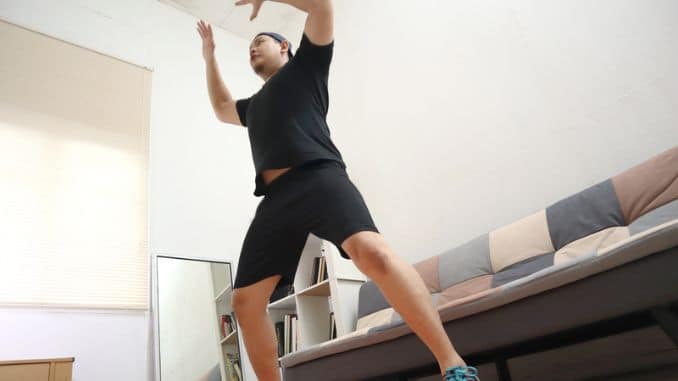
c. Dance Cardio
If you want to add fun to your home workout routine, why not try dance cardio? Dance workouts are great for getting your heart rate up and moving. You can find plenty of dance workouts online that you can do from the comfort of your own home.
d. Yoga
When it comes to home workouts, yoga is a great way to stay in shape and get a good workout without having to go to the gym. There are a variety of different yoga exercises that you can do at home, depending on your fitness level and goals. Some exercises focus more on stretching and flexibility, while others are designed to help with strength and balance.
No matter what type of yoga exercise you choose, focusing on proper form and technique is essential. Additionally, it's important to listen to your body and take breaks when needed. This will help ensure you get the most out of each exercise and reduce your risk of injury.
The old saying goes, “If you want to get healthy, you need to exercise.” Exercise is a great way to boost your immune system, reduce stress, and improve overall health. It's also an essential part of any home workout program. Many people have started incorporating their home workouts during quarantine into their daily lives. Nothing beats a fulfilling home workout program to stay healthy during quarantine and fit. They are convenient, cost-effective, and offer a wide range of options for every fitness level. Home workouts are so popular for a reason. They can be a fantastic way to stay in shape and relieve stress simultaneously. Moreover, working out at home can positively impact your mental health.
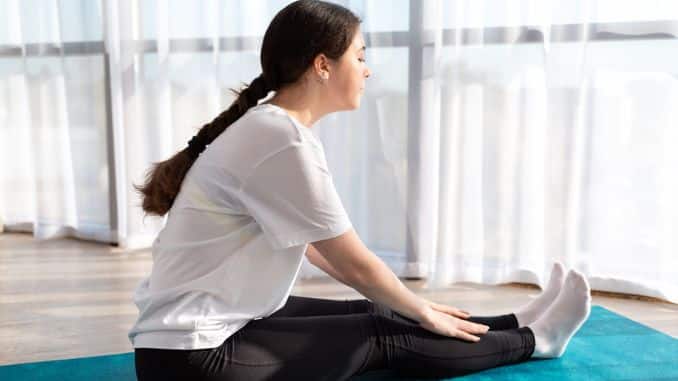
2. Videos
If you're looking for a great way to get a workout at home, then workout videos are a great option!
There are tons of workout videos, so you can pick something that fits your needs and goals.
For starters, you can find videos on YouTube or other streaming services that show you how to do specific exercises. These can be great if you want to focus on one particular area, like your abs. You can also find videos that give a full-body workout to get a good overall workout.
Many workout programs are available if you're looking for something more structured. These programs often come with a set of videos and accompanying materials. Some even have a personal trainer or coach to guide them through the program.
Finally, many apps are available that have pre-recorded or live-streamed workouts. You can pick from a variety of different styles and levels of intensity. Some of these apps even allow you to create your custom workouts.
Thanks to the rise of social media, exercise is now easier than ever. With videos and apps, YouTube and Facebook, getting into the habit of working out has never been more accessible. Everyone has a workout, from circuit training to yoga and Pilates. Finding the right fit for you is vital to succeeding at any exercise routine. Workout videos are now easy to find; with just a click on your smart tv or smartphone, there will be a lot of choices to choose from. Having videos with your workouts is a guide and makes you feel you are with somebody while working in your home.
Regardless of the workout video type, follow the instructions closely and listen to your body. This will help you get the most out of your workouts and help you stay healthy during quarantine and safe.
3. Walk Around
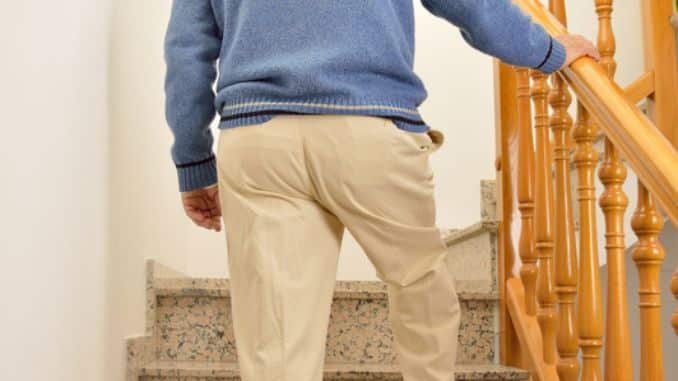
If you’re looking for an easy, low-impact exercise that you can do at home, then walking is a great option! Walking is one of the best ways to stay active and get all those endorphins while also helping to trim your waistline and reduce your risk of several diseases. You can do many walking exercises at home, depending on your goals and fitness level.
3 Types of Walking Exercises:
a. Interval Walking
This involves alternating between short bursts of fast and slow walking for a set period. You can adjust the intensity of the exercise depending on how much time you have available and how much energy you have. This exercise is excellent for burning calories and improving your cardiovascular fitness.
b. Power Walking
This involves increasing your speed and intensity as you walk, and it’s an effective way to get your heart rate up while maintaining a moderate pace. Power walking can help you build strength and endurance, and it’s a great way to get in a good workout, even if you don’t have access to a gym or an outdoor track. You can do stair walking as a walking exercise at home. This involves walking up and down stairs for a certain amount of time or until you reach a certain distance. This exercise works your legs, glutes, and core muscles and can be done with or without weights.
c. Endurance Walking at Home
This involves setting a certain distance or time to walk, then maintaining that pace for the duration of the walk. Endurance walking is an excellent way to build stamina and help you become more comfortable with longer-distance walks.
Regarding walking exercises you do at home, it is essential to be cautious. Wear footwear that gives you the necessary cushioning and stability, drink a lot of water before and after your walk, and be mindful of your environment.
By keeping these tips in mind, you can get the health advantages of walking without stepping out of your house! When you consider it, walking is not a complicated thing to do. It is a natural, effortless movement. Yet, it can be a challenge for some individuals. This is why pushing our minds and bodies to walk is significant.
Walking is advantageous for our minds and bodies. It is an excellent way to stay healthy during quarantine, reduce stress, manage weight, and stay active. But we only sometimes have the time to do it. The great news is that you can easily do it with the importance of walking. You can start with a simple walk to another room.
4. Relax

Relaxation is one of the most important things we can do for our health and well-being. Finding ways to stay healthy during quarantine and relax at home can help us de-stress and recharge. There are many different types of relaxation that you can do at home, so let’s explore some of the most popular options.
Types of Relaxation you can do at home.
a. Yoga
This ancient practice combines physical poses with mindful breathing and Meditation to help you relax and relieve stress. Many people find relief and relaxation through yoga, as it’s a great way to calm the body and mind.
b. Aromatherapy
Aromatherapy is a beautiful way to relax and unwind at home. It's a form of alternative medicine that uses essential oils extracted from plants to promote health and well-being. The oils are typically inhaled or applied topically to the skin. The scent of essential oils can create a calming atmosphere in your home. This can help reduce stress, ease tension, and promote relaxation. It can also improve sleep quality, boost mood and promote emotional well-being.
The oils are made from plant parts such as leaves, flowers, bark, fruit, seeds, and roots. Each oil has its unique scent and therapeutic properties. For example, lavender is used to help reduce anxiety, while eucalyptus is used to help clear the airways and boost immunity. When using aromatherapy, it's important to use high-quality essential oils, as lower-quality oils can contain additives that may not benefit your health. You should also avoid applying the oils directly to your skin, which can irritate it. It's best to dilute them with a carrier oil such as almond or jojoba oil.
You can use aromatherapy to create a relaxing environment in your home. Whether you use a diffuser or simply an oil burner, it's an effective way to soothe away stress and help you relax.
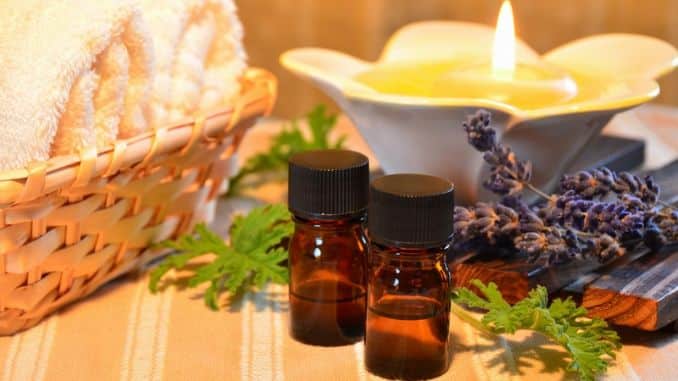
c. Meditation
Meditation is a powerful tool for relaxation and can be practiced at home with relative ease. It involves focusing on a particular thought or activity, such as your breath, a phrase or mantra, or an image. This helps to clear the mind of distractions and brings about a deep state of relaxation.
The benefits of Meditation can be profound, including reducing stress and anxiety, improving mental clarity and focus, and enhancing overall well-being. It can also help with physical ailments such as insomnia, pain, and high blood pressure.
Start meditating at home by finding a comfortable place where you won't be disturbed. Sit in a chair or on the floor with your back straight, your palms facing up, and your eyes closed. Then focus your attention on your breath. Observe how it moves in and out of your body without trying to control it. When distracting thoughts arise, don't fight them – observe them without judgment and then refocus on your breath. You can also repeat a phrase or mantra to help keep your attention on the present moment. Meditation is best practiced regularly, so make it part of your daily routine. Start with just five minutes a day and gradually increase the time each day. With practice, you'll soon begin to feel the benefits of this powerful relaxation technique.
d. The Art of Journaling
Journaling can be a great way to relax and de-stress. It's a great way to express yourself and get your thoughts on paper. Plus, it's so easy to do from the comfort of your own home! Journaling is an art form that allows you to express yourself creatively.
You can write about whatever you want, whether it's your thoughts, ideas, or feelings. You don't have to follow specific rules or guidelines – start writing and see where your words take you. Journaling is also a great way to practice self-reflection and boost your self-awareness. You can use it as a tool to think about your life, where you're headed, and what kind of person you want to be. It can help you identify patterns in your thinking and behavior so that you can make positive changes in your life.
There are many different types of journaling that you can do. You can keep a regular diary or try a themed journal like a gratitude or dream journal. You can also use it as an outlet for creative writing, like fiction stories or poetry. The possibilities are endless! No matter what type of journaling you choose, the key is making it enjoyable and meaningful. Set aside time each day or week to write in your journal and make it part of your daily routine. You can also set goals for yourself, such as writing a certain number of words or pages daily.
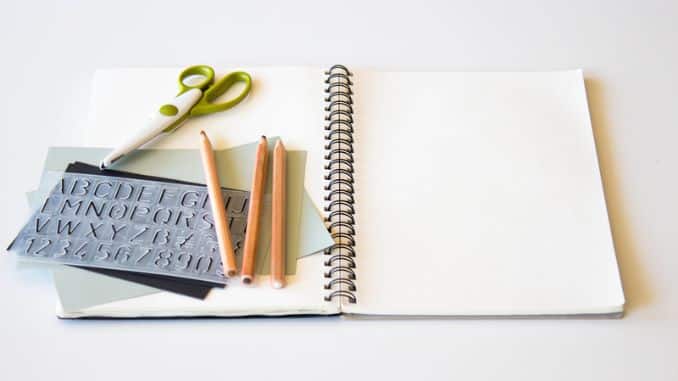
e. Reading
Reading is one of the most relaxing activities you can do at home. It's a fantastic way to escape reality and get lost in a story. Not only is it a great way to unwind and de-stress, but it can also help improve your focus, concentration, and memory.
Reading can be done in many different forms, from physical books to ebooks, audiobooks, and even magazines. Each type of reading material has its benefits, so it's crucial to find the one that works best for you.
Physical books are great because they allow you to take in words on the page and form an emotional connection with the characters in the story. Plus, you can write notes in the margins or highlight sections that stand out.
Ebooks are an excellent alternative for those who want to save space and money, as they don't take up any physical space and are often cheaper than physical books. Audiobooks are also an excellent option for those who don't have time to sit and read but still want to get lost in a story.
Reading has many benefits for both your body and mind. It can help you become more creative, develop vital problem-solving skills, and even improve sleep. Studies have shown that reading can reduce stress, improve focus and concentration, increase empathy and understanding, and even help build relationships.
f. Listening to Music
Listening to music is a great way to relax and unwind at home. Music can have a powerful effect on our moods and emotions, so it's no surprise that it can be an effective relaxation tool. When you listen to music, your body releases endorphins, hormones that make you feel good. This can help reduce stress and anxiety and even energize you.
The type of music you listen to can also significantly affect how relaxed you feel. Generally, slower songs with softer melodies and instrumentals are better for relaxation than fast-paced and intense music. Classical music is particularly effective for peace, but other genres like jazz, blues, folk, and even some pop songs can be just as beneficial. Calming or upbeat music can also help you regulate your breathing and heart rate, reducing stress levels.
Finding a comfortable space where you won't be disturbed is essential when listening to music for relaxation at home. Put on some headphones and turn the volume up to a comfortable level. You can also experiment with different types of music until you find something that helps you relax.

These are just a few relaxation techniques you can use at home. So, find what works best for you and start incorporating it into your daily routine!
5. Wash your Hands
Washing hands can seem like an unnecessary task. After all, you're only washing your hands for a few seconds. But the importance of washing your hands cannot be understated, especially during this time of Covid. It's one of the easiest ways to prevent the spread of germs, viruses, and bacteria. Keeping your hands clean can also prevent illnesses like colds, styles, and skin infections.
According to the World Health Organization, nearly 80% of all illness is caused by germs. Furthermore, as many as 80% of people are contaminated by the same germ at some point in their lives. That's why it's so important to wash your hands frequently. Washing your hands can help you eliminate germs before they infect you and increase the odds of avoiding getting sick.
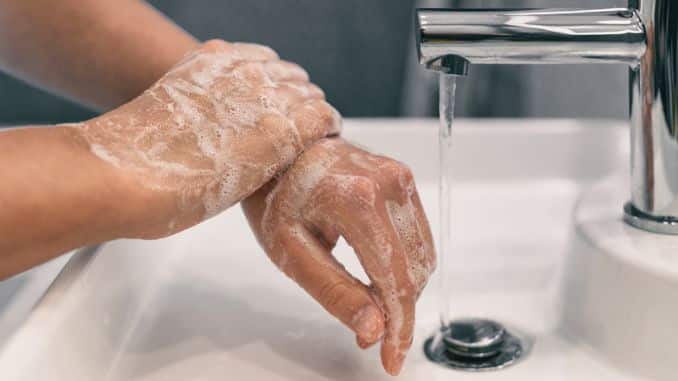
Staying healthy during quarantine and being active and fit is an excellent way to be healthy and happy.
Whether you want to lose weight, get back into shape, or stay healthy during quarantine and happy, staying active at home is the best way to do it. It can help you lose weight, build muscle, and maintain a healthy lifestyle. It also helps to relieve stress and improve your mental health. Reducing stress is essential to staying healthy during quarantine and will help you feel better.
Stress is a normal part of life.
We encounter stressful situations every day, especially when we are in quarantine. But when stress becomes chronic, it can take a toll on your mental and physical health. Stress can manifest itself in many ways. Some people exhibit stress through constant anxiety, while others show signs of stress through irritability or a general feeling of unease. Regardless of the stress you experience, taking care of yourself is essential.
Being in quarantine is not easy, primarily if you are used to going out and socializing with other people. It can be challenging to adjust to being cooped up indoors all the time, and you may feel restless or lonely. However, there are more things you can do to make the most of your time in staying healthy during quarantine besides the 5 things we mentioned above. First, take advantage of the extra time you have to pursue hobbies or interests you usually wouldn't have time for. You've always wanted to learn to cook, or you've been meaning to start a blog. Now is the perfect time to do those things!
Additionally, use this time to connect with people you care about. Whether you're reaching out to old friends or spending time with family, staying bound is essential. Finally, remember to take care of yourself. Make sure you're getting enough sleep, eating healthy, and getting some exercise. It's critical to stay healthy during quarantine, both physically and mentally. Quarantine may not be accessible, but it can be a time to grow and learn.

